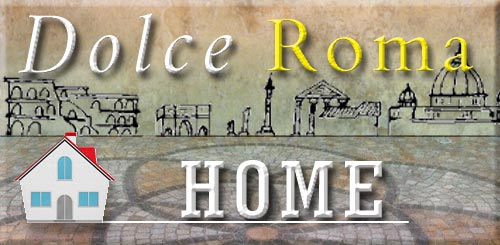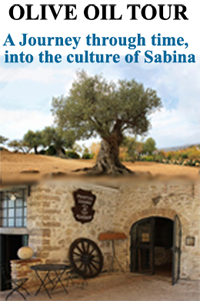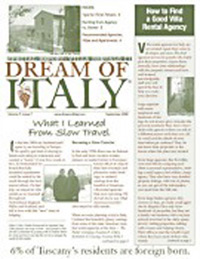ROME FOR TOURISTS
Things to do, places to see
Museums, archaeological sites and churches
The official website of the Roman Imperial Forums includes a brief history of Rome and descriptions of the forums.
The Capitoline Museums include collections of classical statues, including Roman copies of Greek statues, colossal parts of the Constantine II statue from the 4th century, and the Etruscan bronze wolf with Romulus and Remus which dates back to the 5th century BC.
Visit the Borghese Gallery where you can admire such works of art as Bernini's "Apollo and Daphne" and Titian's "Sacred and Profane Love".
The Christus Rex web site has information on the Vatican Museums and the Sistine Chapel as well as the Vatican City and St. Peter's Basilica.
Frommer's Complete Guide to Rome also has a description of the major monuments and churches of Rome, including those just minutes away from the apartments: San Clemente, San Giovanni, San Pietro in Vincoli and the Domus Aurea.
Rome Off the Beaten Track
MASS IN THE PARK OF VILLA DORIA PAMPHILJ:
In 1806 Prince Filippo Andrea VI of the noble Doria Pamphilj family asked architect Edoardo Collantini to create a new chapel. Works were completed in 1914 on the neo-medieval design and the chapel was used by the family until 1970 when a new low forbade private masses. The building fell into disrepair, until the recent intervention of the Doria Pamphilj family, who restored the building and reinstated the Sunday masses at 1 pm, now open to the general public.
PALATINE HILL'S GARDENS:
Visit the Palatine hill, through the Orti Farnesiani is one of the Eternal City's most evocative corners. The gardens overlook the enchanted ruins of the Roman Forum and the Colosseum. They were designed by Vignola and commissioned by Cardinal Alexandre Farnese who later became Pope Paul III. The idea was to create a botanical gardens, one of the first botanical gardens ever seen, with new plants imported from every corner of the known world like sweet acacias, flowering aloes, exotic palms. Terraces and a nymphaeum were added at a later date.
The Orti Farnesiani represent the ideal destination for explorers in search of archaeological thrills and a return to nature. For those who are in search of the beauty arising from the perfect combination of art and nature
A DAY AT THE ZOO
The Rome city zoo, newly-named, Bioparco, has undergone some fabulous changes over the past few years. What was a dilapidated ant antiquated collection of exotic beasts has transformed in to a humane environment providing animals with natural habitats and stimulating activities. The new zoo, dedicated to protecting the environment and conserving endangered species, is a wonderful place to spend a sunny spring afternoon.
SANTA SUSANNA CHURCH
The Santa Susanna Church is considered the first example of Baroque architecture in Rome. The combination of columns and pilasters, and the exquisite decoration, are the marks of Baroque architecture preceding the golden age of Bernini and Borromini.
The Santa Susanna church has been the official American Catholic Church in Rome since 1922. The Church is close to the American Embassy, and is a natural haven for visiting American Catholics. For anyone interested in participating in the vibrant social life of the American Catholic community in Rome, Santa Susanna offers a welcome embrace.
ART NOUVEAU IN VILLA TORLONIA
Villa Torlonia in one of the capital's lesser known parks, but now you have a good reason to visit it: restoration of "casine" has just been completed.
The art nouveau fittings of the beautifully eccentric "Casina delle Civette" are fresh from restoration. Best known for the stained glass windows which give it the air of fairytale cottage, the Casina also boats numerous nature-inspired designs for stained glass, which line the walls and trace the evolution of the craft in the early 20 th century.
The "Casino Nobile" is also worth a visit. It was bought by Giovanni Torlonia at the end of 18 th Century. In 20 th Century it was used as Mussolini's private residence during the World War II.
After the war the Casino fell into a state of disrepair until the restoration returned it to its former glory.
THE ROSETO COMUNALE
The garden, next to Circo Massimo, boasts 1.200 species of roses, coming from any corner of the world as China, Mongolia including some curious specimens: the Chinensis virdiflora has green petals, another Chinensis variety changes colors with time. Many roses are dedicated to movie stars like the "Lollo", roses dedicated to the actress Gina Lollobrigida, or Sophia dedicated to Sophia Loren. The beginning of May to end of June is flowering season. Be sure you don't miss the breathtaking sight of acres of roses in full bloom.
SANTA SABINA ALL'AVENTINO
The basilica of Santa Sabina is the first Dominican church and was originally built in the 5 th century. The original cypress-wood doors are carved with ancient biblical scenes and inside you will be able to admire Corinthian columns and 16 th century frescos. Don't miss a walk in the "Giardino degli aranci " (orange garden) with its dozen of orange trees, planted in memory of Saint Dominic, the first to bring Spanish oranges to Rome in 1220.







